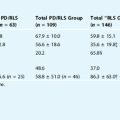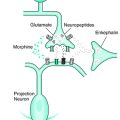Chapter 4 Restless Legs Syndrome as a Movement Disorder
Movement disorders are neurological disorders in which there is either (1) an excess of movement or (2) a paucity of voluntary and automatic movements, unrelated to weakness or spasticity. The latter group is usually referred to as hypokinesia (decreased amplitude of movement), bradykinesia (slowness of movement), and akinesia (loss of movement). The parkinsonian syndromes are the most common causes of such paucity of movement.
Restless legs syndrome (RLS) is part of the former group, and this group is commonly referred to as hyperkinesias (excessive movements), dyskinesias (unnatural movements), and abnormal involuntary movements. Box 4-1 lists the various movement disorders.
Why should RLS be called a movement disorder? Actually, there are several types of involuntary movements in RLS, and each type can be considered an abnormal movement; thus, each qualifies to be placed within the movement disorder listing. Periodic limb movements in sleep, formerly called and misnamed nocturnal myoclonus,1 are involuntary movements in which relatively slow flexion movements of one or both feet and legs occur at periodic intervals of approximately every 20 seconds—while the patient is asleep. These movements can cause arousals, which create a disturbance of sleep. The regularity of these abnormal movements led to the more appropriate name of periodic movements in sleep.2 Other parts of the RLS spectrum that properly qualify as a movement disorder consist of myoclonic jerks, sustained dystonic movements, and stereotypical movements that occur while the patient is awake, particularly in the late evening.3
The most common feature of restless legs syndrome is the sensory phenomenon in the late evening of discomfort in the legs relieved by walking about. Why should this be considered a movement disorder? Is it not more appropriate to call it a sensory disorder rather than a movement disorder? Certainly it is a sensory disorder, but it also qualifies as a movement disorder because there is a movement component. Rather than the motor component being an involuntary movement, however, it is an “unvoluntary” movement. Unvoluntary movements are movements that are induced by an inner sensory stimulus (e.g., the need to “stretch” a body part or need to scratch an itch) or by an unwanted feeling or compulsion (e.g., compulsive touching or smelling).4–6 Other unvoluntary movements are also considered to be movement disorders, such as the movements seen in people with akathisia or tics. Unvoluntary movements can be suppressed but with a resulting discomfort. In fact, it is the relief of unpleasant sensations by making a movement that causes the so-called unvoluntary movement.7 The walking around to relieve the unpleasant feelings in the legs is an unvoluntary movement and hence a movement disorder.
Thus, RLS fits in its rightful place in Box 4-1 and is listed among the other movement disorders designated as those with excessive movements.
1. Symonds CP. Nocturnal myoclonus. J Neurol Neurosurg Psychiatry. 1953;16:166-171.
2. Coleman RM, Pollak CP, Weitzman ED. Periodic movements in sleep (nocturnal myoclonus): Relation to sleep disorders. Ann Neurol. 1980;8:416-421.
3. Walters AS, Hening WA, Chokroverty S. Review and videotape recognition of idiopathic restless legs syndrome. Mov Disord. 1991;6:105-110.
4. Lang A. Patient perception of tics and other movement disorders. Neurology. 1991;41:223-228.
5. Tourette Syndrome Classification Study Group. Definitions and classification of tic disorders. Arch Neurol. 1993;50:1013-1016.
6. Fahn S. Motor and vocal tics. In: Kurlan R, editor. Handbook of Tourette’s Syndrome and Related Tic and Behavioral Disorders. New York: Marcel Dekker; 1993:3-16.
7. Ekbom KA. Restless legs syndrome. Neurology. 1960;10:868-873.





